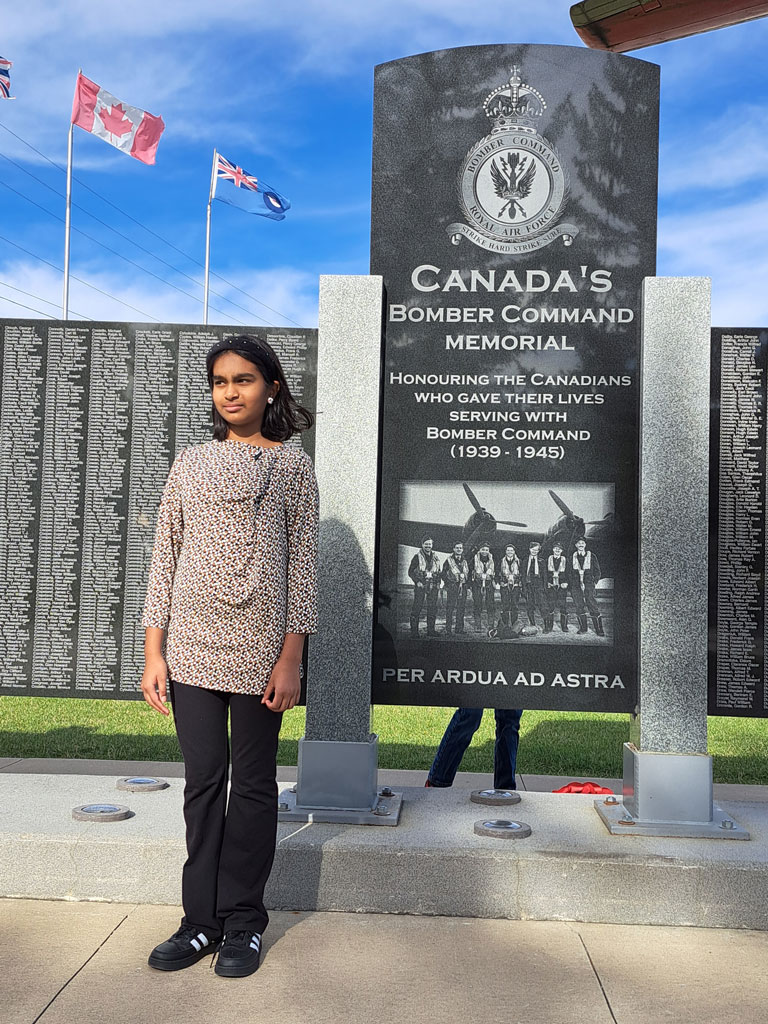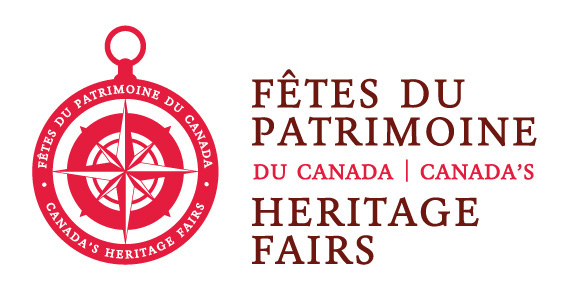Mehnaz K.

John Fauquier - Canada's Greatest Bomber Pilot
Mehnaz K.
Southern Alberta Regional Heritage Fair
Lethbridge, AB
For my Heritage Fair project, I chose to explore the life and legacy of John Fauquier – Canada’s Greatest Bomber Pilot. My main inquiry question was: “What made John Fauquier one of Canada’s greatest bomber pilots, how did his leadership shape Canada’s role in World War II, and how does his legacy continue to inspire the Canadian military, Air Force, and future aviators today?”
Through my research, I discovered that John Fauquier was not only an exceptionally skilled pilot, but also a fearless and respected leader. During World War II, he flew over 90 bombing missions—an extraordinary number compared to the average of 30. He led two of the most prestigious units in the Royal Canadian Air Force: No. 405 Pathfinder Squadron, Canada’s first squadron in the elite Pathfinder Force, and No. 617 Squadron, famously known as the “Dambusters.” These units were responsible for some of the most high-risk and strategically critical operations of the war. Fauquier earned several top military honors, including the Distinguished Flying Cross and the Distinguished Service Order with Two Bars, making him – “Canada’s Most Decorated Bomber Pilot”.
My conclusion was that John Fauquier’s impact went far beyond his wartime achievements. He led by example, showing unwavering courage, humility, and a deep sense of duty. Even when he could have stayed in safer roles, he continued to fly missions alongside his crew. His legacy lives on today, inspiring members of the Canadian Armed Forces, the Royal Canadian Air Force, and young aviators across the country. Fauquier remains a symbol of true Canadian heroism, and a lasting example of what it means to serve with honor and bravery.
What sources and evidence did you consult for your project? What different perspectives did they provide on your topic?
For my project on John Fauquier, I consulted a variety of sources that offered both factual information and personal insights into his life and legacy. One of my main sources was the book “Johnny: John Fauquier DSO and 2 Bars DFC – Canada’s Greatest Bomber Pilot” by Dave Birrell. This provided a detailed and well-researched biography that highlighted Fauquier’s accomplishments, leadership style, and contributions to Canada’s war effort. I also visited the Bomber Command Museum of Canada in Nanton, Alberta, where I explored exhibits and artifacts related to Fauquier’s missions and the squadrons he led. This hands-on experience gave me a deeper understanding of the challenges bomber crews faced. In addition, I used online sources such as The Canadian Encyclopedia, Wikipedia, and articles from The Ottawa Citizen and Beechwood Cemetery, which provided different perspectives—from formal historical accounts to more personal and reflective tributes. These sources helped me understand not just the military achievements, but also Fauquier’s character, values, and lasting influence. Together, these resources offered a balanced view: official records showcased his bravery and awards, while personal stories and museum exhibits illustrated his humility, leadership, and the respect he earned from his peers. This mix of perspectives helped me fully appreciate why John Fauquier is remembered as a national hero and continues to inspire Canadians today.

What is the historical significance of your topic?
Historical Significance of My Topic:
John Fauquier’s legacy holds great historical significance due to both his immediate impact during World War II and his lasting influence on Canadian military and aviation.
Short-Term Impact:
During WWII, Fauquier flew over 90 bombing missions—three times more than most bomber crews—demonstrating extraordinary bravery and leadership. As the commander of elite squadrons like No. 405 Pathfinder Squadron and the legendary No. 617 “Dambusters,” his precision bombing and fearless leadership played a key role in Allied operations. His actions helped boost moral and effectiveness within the Royal Canadian Air Force and had a direct effect on mission success rates.
Long-Term Impact:
Fauquier became a national symbol of courage, duty, and leadership. His legacy inspired reforms in leadership expectations within the RCAF and helped shape Canada's military and aviation identity. He continued to promote aviation after the war and was inducted into Canada's Aviation Hall of Fame. Today, he remains a role model for military officers, aviators, and Canadians aspiring to serve their country.
Who was Affected:
- Allied Forces benefited from his strategic leadership.
- Bomber Command Crews were inspired and motivated by his example.
- Future Generations of Canadian military personnel and aviators look up to him as a symbol of honor and bravery.
Changes That Took Place:
- Greater recognition of Canadian contributions to air warfare.
- Increased emphasis on leadership by example within the military.
- Strengthened national pride in Canadian aviation history.

Why did you choose this topic?
I chose John Fauquier for my heritage project because he represents courage, leadership, and a deep commitment to service. As one of Canada’s greatest bomber pilots in the World War ll, he led some of the most dangerous missions with the Royal Canadian Air Force, including low-level raids and precision bombing under heavy enemy fire. His bravery earned him multiple honors, including the Distinguished Flying Cross and the Distinguished Service Order — twice. John Fauquier was more than a skilled pilot; he was a symbol of Canadian resilience and global contribution during WWII. What inspires me most is not just what he did, but how he led others with humility and strength. Visiting the Bomber Command Museum of Canada in Nanton, Alberta, and meeting Dave Birrell — author of Johnny — made Fauquier’s story feel personal and real. His legacy reminds me of the importance of service, sacrifice, and honoring those who shaped our history.

